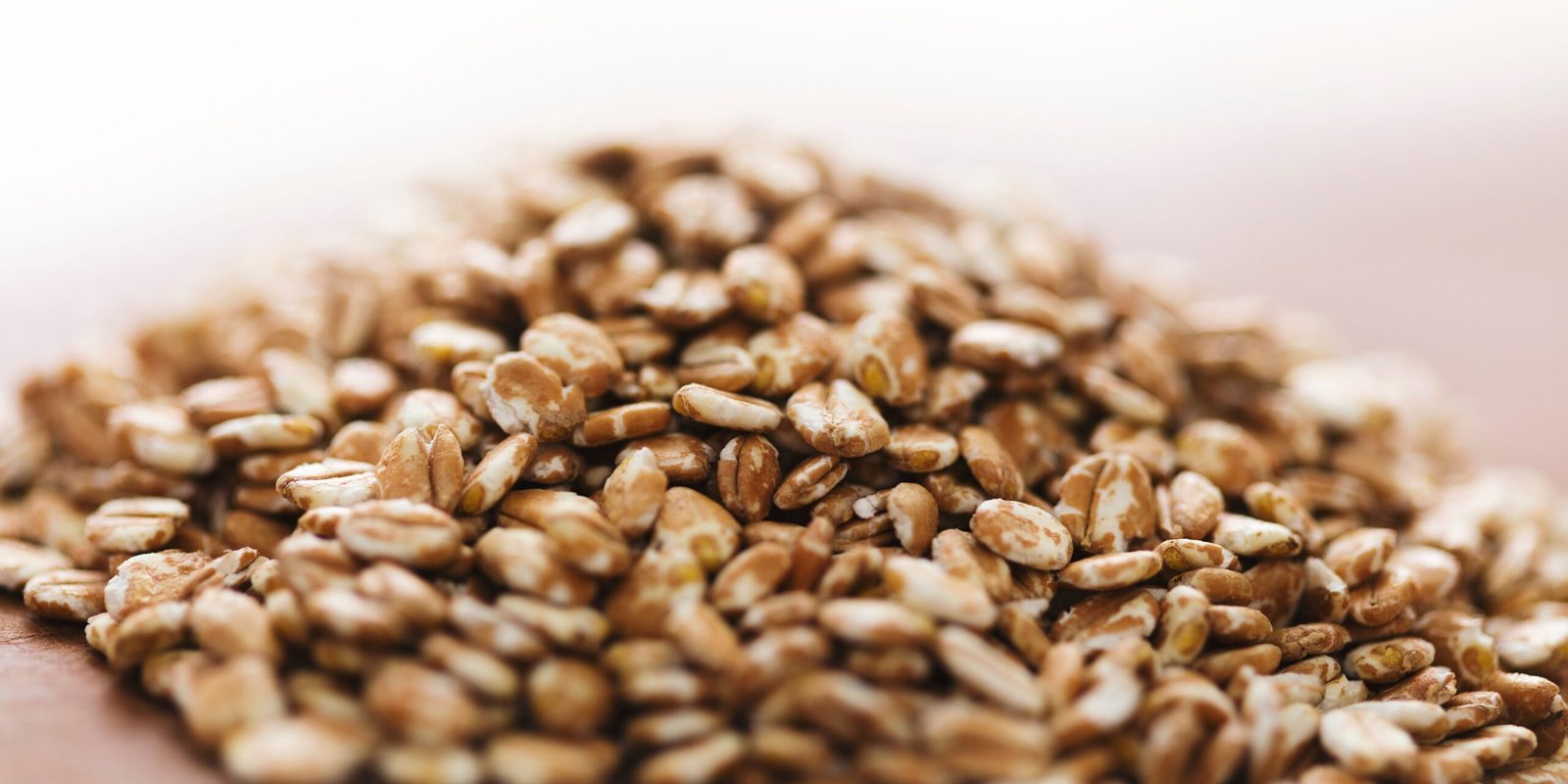How To Store Wheat Berries For A Longer Shelf Life
This post may contain affiliate links, full disclosure here.
Wheat berries are surprisingly uncommon on American grocery lists, despite the fact that wheat is the most widely consumed grain in the country.
Wheat berries are wheat in their purest form, consisting of whole-grain kernels devoid of the inedible husk.
Wheat berries are the source of all wheat products before they are processed. Wheat flour, for example, is created from ground wheat berries that have been milled.
Despite the fact that most people are familiar with whole wheat bread and other whole wheat items, only a small fraction of people have tried wheat berries.
However, how long do wheat berries last and how should they be stored? Continue reading to learn more about wheat berries and how to store them.
See also: How To Store Quinoa Long-Term
What Category Are Wheat Berries In?
Wheat berries are the edible component of the wheat kernel before it is processed, containing the bran, germ, and endosperm.
This chewy, nutty, high-fibre whole grain can be used in the same way as any other whole grain.
Wheat berries have a sweet, nutty flavour that complements both sweet and savoury dishes. Wheat berries absorb some of the flavours of the dressing or sauce with which they are served.
Toss a handful into a favourite soup or chilli recipe for added fibre and nutrition, or mix it with a vegetable stir-fry like rice.
Wheat berries can be found alongside the rice and beans or in the baking aisle near the various cereal grains in any grocery or natural foods store. In the international foods department, they’re sold alongside other whole grains like freekeh and bulgur. Wheat berries can also be purchased online.
Bob’s Red Mill is a well-known retailer of wheat berries in a bag. Wheat berries are less expensive than quinoa and other “old grains” since they aren’t as popular as quinoa and other “ancient grains.”
The two main types of wheat berries to buy for food storage are hard wheat berries and soft wheat berries.
| heat Type | Protein | Best Use(s) |
|---|---|---|
| Hard red spring, Hard red winter & Hard white wheat | 11-15% | bread flour (high gluten) |
| Soft red winter, Soft white winter & Soft white spring | 9-12% | pasta, cake, biscuit, cracker, and pastry flours (low gluten) |
Why Store Wheat Berries
Homesteaders are split on whether to keep wheat in whole berries or ground flour form.
One group of people praises the benefits of raw berries, while another group praises the benefits of ready-to-use flour.
So, which choice is the best?
There is no such thing as a right or wrong response. Like many other elements of life, it boils down to your personal preferences and factors such as cost, storage, and versatility.
However, as you’ll see in this article, there are several other advantages to keeping wheat berries around:
It’s Cheaper
Wheat berries are significantly less expensive than ground flour in terms of price. It only takes a few minutes to grind your own flour.
It’s easy to see why whole wheat requires more storage space when you consider how long the berries will last. One of the most expensive components of using whole wheat berries is a grain grinder.
There are many different styles and pricing ranges to pick from on the market. You’ll want to invest in a good grain grinder.
Cheaper versions or grinding equipment may appear to be a good deal, but if you have to replace them many times or add extra processing processes, you will not save any money.
They Have A Long Shelf Life
Wheat berries can be stored for decades, whereas flour has a short shelf life. The flour loses some of its nutrition and shelf life as soon as the wheat is broken open and exposed to air.
Furthermore, the oil in the cracked wheat kernel reacts with the oxygen in the air, turning the flour rancid in a matter of months.
The experts were ecstatic when several wheat berries uncovered in Egyptian pyramids grew after two thousand years. Wheat berries’ lifespan is due to their ability to be stored. You may extend the life of your items by properly storing them. Also, keep them cool by storing them in sealed containers.
Cost, security, and portability are all issues to consider when deciding where to store your belongings. The wheat should be kept cool and away from direct sunshine, regardless of the storage technique.
Each of the current storage methods listed here has its own set of benefits and drawbacks.
- Mylar bags are useful, lightweight, and easy to transport. Their disadvantages include the high cost and rodent vulnerability.
- Many grains are packaged in double bags, which are generally made of cotton. Despite the fact that this procedure has been used for centuries, it does not prevent bugs from entering the grain.
- Glass jars– Glass jars can be used to store lesser amounts of wheat berries. They are at their best when used on a regular basis.
- Tin cans – Tin cans are still a traditional way to store grain in some areas. They do have certain drawbacks, such as the cans rusting in humid environments. They also necessitate the use of an opener, and the grain may develop a “tinny” odour and flavour (it will spoil after you expose the grain to open air for a while).
- Barrels – Large barrels are used to store grain in larger bulk quantities. Although these barrels are rodent-proof, their portability is a worry. If you need to move fast, carrying the barrels to your new location may be difficult.
- Five-gallon buckets– If you ask gently, many bakeries and shops will offer you a free 5-gallon bucket. They stack nicely and are simple to carry from one place to another. The one notable disadvantage is that these buckets can be difficult to open and are susceptible to rat nibbling.
- Oxygen absorbers accomplish exactly what their name implies: they absorb both air and moisture. When added to any of these storage methods, they assist retain freshness and viability. (The double bag method is probably a waste of money because it isn’t airtight.)
They Are Versatile
In the same way that ground flour is used in recipes, whole wheat berries can be used in a variety of ways. They’re a versatile snack that can be boiled and eaten like oatmeal.
You may pop them like popcorn, use them as a rice substitute, and use them in meatloaf and other dishes.
In terms of nutrition, berries are a better per-serving option because they keep their nutritional worth. The uncooked wheat berry contains fibre, iron, and potassium, among other nutrients.
Wheat berries have about 150 calories and about 30 grammes of carbohydrates per serving, both of which are necessary for energy maintenance. Wheat sprouts are also abundant in iron and a variety of vitamins (A, C, and D).
Because the grain is still intact, you can plant it to give more products for you and your livestock. Around seven pounds of animal feed are produced from one pound of wheat berries.
It’s a simple and inexpensive way to ensure that you have enough food for everyone and everything.
Proper Ways To Store Wheat Berries
Wheat berries can be stored for a long time. Archaeologists discovered grain that was still alive and healthy in Egyptian tombs.
Consider how many thousands of years the wheat berries have been safely hidden.
So, if you’re wondering how long wheat berries last, there are two things to consider:
- Maintain a dry environment.
- Also, maintain the space clear of insects and rodents.
- Take a look at the following storage options.
Bulk
Wheat berries are commonly stored in bulk in large food-grade buckets with lids. However, to keep pests, vermin, and moisture away from the wheat berries, a tight-fitting cover is required.
In Uline 3-gallon food-grade buckets with gamma seal lids, you may store wheat berries in bulk. In that, it attaches to the bucket like a standard tight-fitting lid, yet the top screws on and off, Gamma seal lids are identical to regular tight-fitting lids. This sort of seal allows for easy access to the wheat berries while also ensuring a tighter lid seal.
What berries are supplied to firms like North 40 by Amazon, Lowe’s, Uline, local farms, and ranches? These businesses also sell food-safe buckets and lids. If you’re looking for a low-cost storage solution, ask your local grocery store if they have any abandoned containers.
Unwanted frosting buckets can also be purchased from bakeries and used as excellent storage containers. You could also acquire a few containers for around $1 each from Walmart, and while they are small, they do the job.
Pantry Size
Pantries come in a variety of sizes and use. Farmers store food in excess in outside storage in more expansive regions, such as farmhouses.
For convenience, they usually keep a modest amount on hand in the kitchen pantry.
Because pantry cupboards are often tall, it’s critical that your storage options be both practical and appealing.
Don’t be afraid to let your imagination go wild. Keep in mind that the only requirements are that the containers are bug, pest, and moisture-proof. Airtight kitchen storage containers and canisters are perfect.
Mason jars are attractive as well as functional. A gallon Ziploc storage bag will do the trick, and it’s easy to dump into a measuring cup.
Freezing
Freezing wheat does not harm it if it is properly packaged and can help it retain its freshness and nutritional value. Label and date the grain after placing it in food-safe freezer containers, heavy-duty freezer bags, or vacuum-sealed bags. Place the wheat in the deepest corners of your freezer, where the temperature is most stable, and take out small amounts as needed.
Vacuum Sealing
The best storage method is determined by how long you intend to keep the item. If you’re looking at 5 or more years, I’d recommend using mylar bags instead of regular food saver bags because they’re more airtight and protect against oxidation and incidental sunlight. You can either vacuum out the oxygen and seal them in a FoodSaver, or you can use an oxygen absorber to remove every trace of oxygen and then seal them in a FoodSaver. The berries will last “indefinitely” if they are completely dry when they go in, stay dry, relatively cool, and out of direct sunlight.
Oxygen Absorbers
To create an oxygen-free environment, seal wheat in Mylar-type bags or #10 cans with an appropriate number of oxygen absorber packets. Adult insects will be killed, and larval insects will not be able to survive.
| Storage Method | Storage Recommendations |
|---|---|
| Insecticides | NOT RECOMMENDED, may be toxic if not correctly used |
| Heating | NOT RECOMMENDED, too difficult to control the correct amount of heat to apply. |
| Freezing | Freeze 1-15 lb bags of wheat for 2-3 days. Allow warming for 24 hours. Freezing kills live pests, but not insect eggs. Multiple freezing and warming cycles may be needed to kill all insects and hatching eggs. |
| Vacuum Sealing | Seal wheat in vacuum bags following vacuum sealer instructions. |
| Dry Ice (CO2) | Place 3-4” of grain in the bottom of a 5-gallon plastic bucket. Use gloves when handling dry ice. Add 2-3 oz. crushed dry ice. Fill the container to the full height. Place the lid on top slightly askew. After 30 minutes, seal the lid air-tight. Dry ice will control most adult and larval insects present but usually will not destroy eggs or pupae. If properly applied, a single treatment with dry ice is sufficient for long-term storage. Annual dry ice treatments are not necessary unless an infestation is recognized in the stored grain. Treating grain with dry ice does not reduce its ability to sprout or its food value. |
| Oxygen Absorbers | Seal wheat in Mylar-type bags or #10 cans along with an appropriate number of oxygen absorber packets to create an oxygen-free atmosphere. |
| Food-Grade Bag Containers and Bucket | Choose insect-free sources for wheat. Store them in clean and dry containers impermeable to insects. |
Other Storage Conditions to Consider
Wheat storage at 40-60°F is ideal but is usually impractical in most homes except during the winter months. Freezing or subzero temperatures have no effect on stored grains. Temperatures above 60°F cause a faster decline in seed viability (ability to germinate), but only a slightly faster loss in food value.
Limited Space Storing Options
Do you have a restricted amount of storage space? If that’s the case, there are various options for dealing with your problem.
Several farmsteads, for example, sell wheat berries in 5-pound increments in 2.5-pound re-sealable, food-safe, moisture-resistant bags. The good news is that you just open what you need, which keeps the other wheat berries fresh.
Wheat berries can also be supplied to you on a regular basis if you sign up for a subscription service. As a result, stockpiling massive quantities is unneeded.
There’s no need to bother about refrigerating, freezing, or preserving your wheat berries after that.
See also: Guide To Storing Flour Long Term
How Long do Wheat Berries Last When Stored Properly?
Wheat berries can last up to 30 years in the refrigerator. To answer the topic of how long do wheat berries last in a different way, they will only survive this long if they are properly stored.
Furthermore, if wheat berries are stored properly, they can retain up to 80% of their nutritional worth. Wheat berries can also have a long shelf life provided they are packaged in an oxygen-free container and stored in cold, dry, and dark conditions.
Before packaging and storing wheat berries, the moisture content should be less than 10%.
How long wheat berries last is partly determined by how they are packaged and stored. The handy container trio of Mylar bags, food-grade buckets, and oxygen absorbers is the best way to store dry products for the DIYer.
In nine simple stages, here’s how you package wheat berries:
- Place an 18”x28” Mylar bag in the centre of the table. Fill a 5-gallon food-grade bucket halfway with water.
- Fill the Mylar bag with wheat that has a moisture content of less than 10%.
- On top of the grain, place a 2,000 CC oxygen absorber.
- To seal the Mylar bag, use the highest setting on your home iron.
- Fold the Mylar Bag into the bucket gently.
- Close the bucket’s lid.
- The date and type of food should be written on the bucket.
- Keep the bucket out of the sun and off the floor in a cool, dry location.
- Buckets that are stacked higher than three high will fracture.
Foods having a moisture content of more than 10% that are stored in an oxygen-free environment risk becoming infected with botulism, which is fatal.
If you keep wheat in an oxygen-free environment, you don’t need to liberate it before storing it. In an oxygen-deficient environment, bugs, bug eggs, and pupae, particularly weevils, will perish.
See also: How to Keep Your Food Stockpile Free of Moisture and Pests
Best Wheats For Storing Long Term
Soft wheat is suitable for long-term storage. Before keeping this product, however, there are a few things to keep in mind.
Soft wheat is frequently used to make flatbreads, biscuits, and pastries. Hard wheat is commonly used in the production of rising dough for things like bread.
Because soft wheat contains less gluten, it does not form very fluffy yeast bread until combined with hard wheat. Furthermore, when it comes to protein, you get less bang for your money when using soft wheat.
If you plan to consume mostly flatbreads in a survival situation, soft wheat is less of a concern. Even so, you’ll get less protein unless you add protein to your batter or create flatbread with a high protein staple like beans. Soft wheat can be stored as a complement to hard wheat, but it should not be your primary bread-making grain.
Hard red winter wheat is the most protein-rich of the winter wheat varieties, yet hard white winter wheat produces the best-tasting bread.
Although both the flavour and the amount of protein in a dish are important, good-tasting food might help prevent palate fatigue. And a high-protein diet keeps you alive.
Keep in mind that if you don’t like the taste of bread, you won’t include it to your regular diet.
Wheat berries are used to make farro wheat, which is grown in hotter regions than wheat berries grown in colder climates. The most popular forms of Farro are made from ancient wheat cultivars such as einkorn, spelt, and emmer.
Farro is also employed in a unique way compared to wheat berries. Farro is normally cooked and eaten like rice. Like any other wheat berry, it can be used to make bread, pastries, and other baked goods, but it’s normally boiled and eaten whole.
In the winter, you can prepare and consume wheat berries whole, but you should usually utilise them in baked meals. Rather than using wheat flour, people often keep wheat berries and Farro for long periods of time.
Wheat’s shelf life is often extended when it is preserved. If you wish to increase the shelf life of the bigger portion, instead of grinding berries into flour in large quantities, grind them into flour as needed.
You can use any wheat berry or flour for any purpose, but you’ll get better results if you use flour with qualities that match the food you’re making.
The hard red and white wheat berries, for example, are the most commonly used in long-term storage. These berries are more commonly used in bread since they have the most protein and gluten.
The most prevalent wheat kinds, as well as their shelf life and uses, are listed here.
Spelt type
The product has a 30-year shelf life.
Spelt is supposed to make good taste yeast bread, spaghetti, biscuits, and crackers, among other things.
Durum durum is a type of durum wheat.
The product has a 30-year shelf life.
Durum is a high-protein flour that makes excellent pasta and unleavened bread. When Durum wheat is ground to generate semolina flour, it produces thick, sticky gluten.
Spring Type: Hard Red
The product has a 30-year shelf life.
Hard red spring is also abundant in protein and works well in yeast or sourdough bread, as well as traditional whole wheat bread.
Hard Red in colour. Winter has a shelf life of 30 years or more.
Hard red winter is the most protein-dense and is ideal for sprouting and yeast bread.
See also: How Much Food To Stock For Emergency Situations
Type: Hard White
Shelf life is 30+years.
Uses: Hard White is a medium protein and tastes excellent in white bread, beer making, and leavened bread.
Type: Emmer
Shelf life is 30+years.
Uses: Emmer is a viable choice for making pasta and unleavened flatbread.
Type: Einkorn
Shelf life is 30+years.
Uses: Einkorn makes good leavened and unleavened bread.
Type: Kamut
Shelf life is 30+years.
Uses: Kamut is organic Khorasan wheat, which you can use in leavened bread and pasta.
Type: Khorasan
Shelf life is 30+years.
Uses: Khorasan makes tasty, leavened bread.
Type: Soft Red
Shelf life is 30+years.
Uses: Soft Red is a medium protein and is first-rate for bread and beer making.
Soft White in Color
The product has a 30-year shelf life.
Soft White has a low protein content, making it ideal for batters for cakes, cookies, waffles, pancakes, and soup thickeners.
Important: Avoid wheat if you have gluten intolerance or celiac disease.
See also: List of Food Storage Items: Which foods are best for long-term storage?
Bottom Line Shelf Life Of Wheat Berries
Hard wheat berries are better for long-term storage than soft wheat berries because they contain more protein. Furthermore, 12 to 15% of the population is gluten-intolerant due to elevated gluten-protein levels.
Old-school preppers routinely freeze dry products before storing them, thereby eliminating all stages of insect life in grains. The majority of grains contain insect eggs when purchased.
If you keep wheat berries in an oxygen-free environment, they don’t need to be frozen before storage. Bugs, eggs, and pupae will die in two weeks if they are kept in an oxygen-free container when you’re trying to store wheat berries long-term.
How long wheat berries last depends on how properly you keep them. To begin, seal any container with a sound oxygen barrier to produce an oxygen-free storage environment.
The greatest D.I.Y. strategy for extending the shelf life of your wheat berries is to use food-grade Mylar bags, food-grade pales, and oxygen absorbers.
See also: How To Store Oatmeal Long-Term On Your Food Storage Shelves



![How To Start A Gluten Free Emergency Food Supply [ Before It’s Too Late]](https://preparinginthecity.com/wp-content/uploads/2021/08/How-To-Create-A-Gluten-Free-Emergency-Food-Supply-768x384.jpg)



